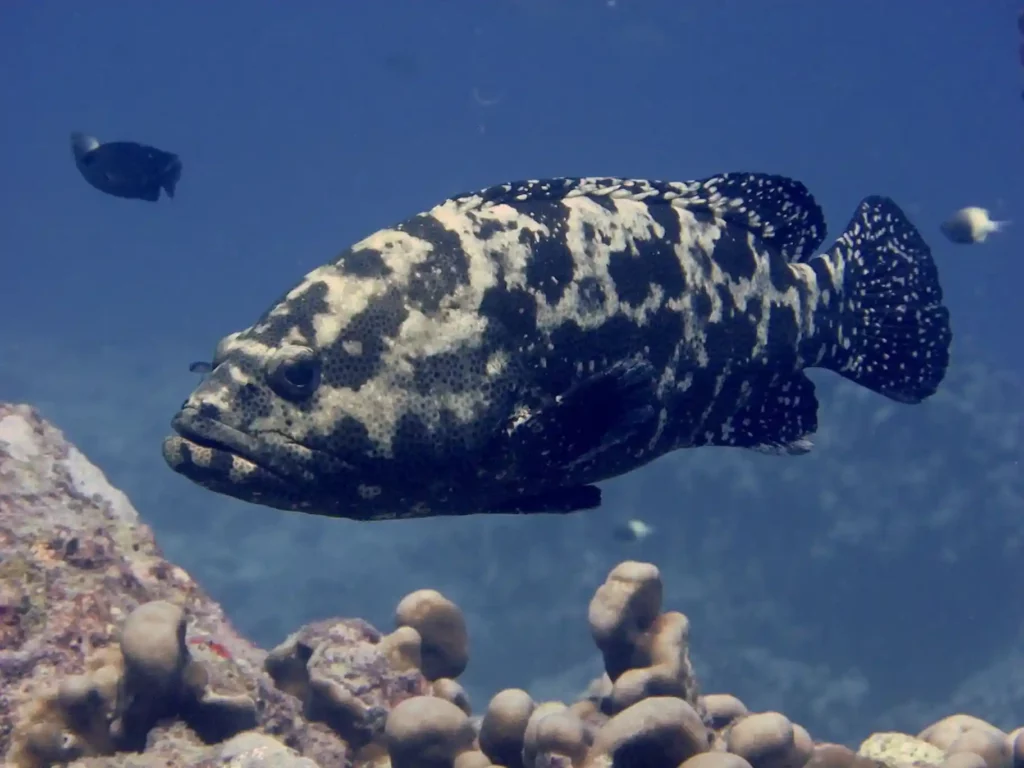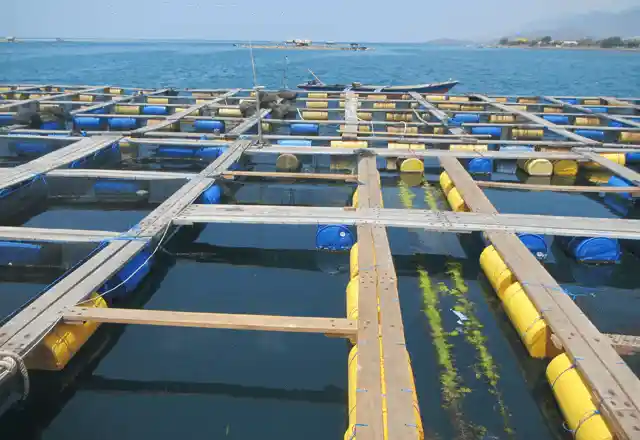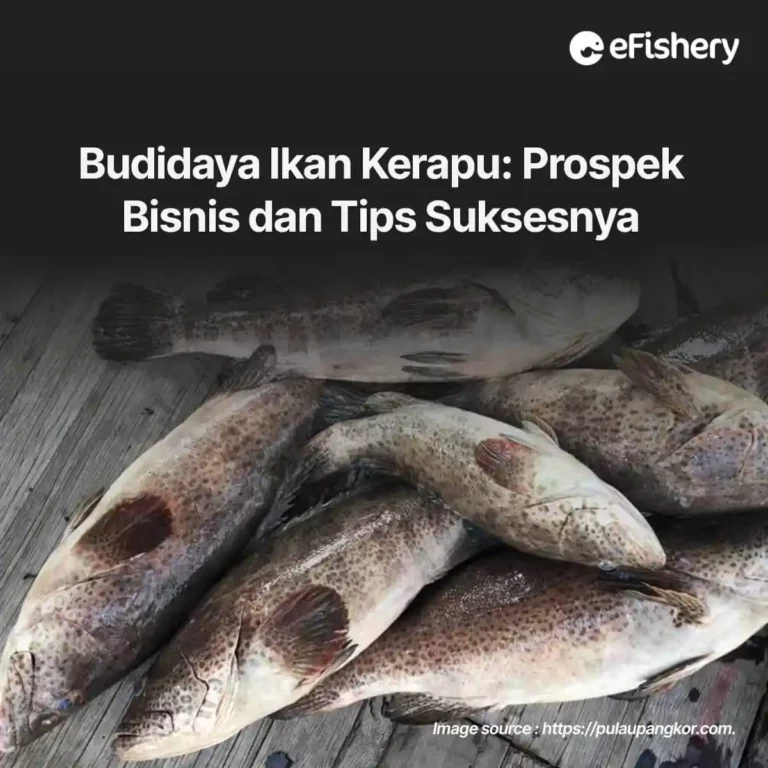The grouper fish farming business is a business that has not been touched by cultivators. Even so, this expensive fish business is very profitable. With very, very high demand and little supply, the grouper fish farming business has great potential.
If you are interested in cultivating, let's see how to cultivate grouper fish in this article!
Grouper Fish Cultivation Business Opportunities

Grouper is a highly nutritious fish containing amino acids, B complex vitamins, and selenium which functions as a tissue builder and enhances the body's immunity. This fish, which is known for its delicious taste and high nutrition, is so popular that it becomes a fishery commodity product with a fairly expensive selling price. Per kilo, grouper can be priced at IDR 150,000-IDR 450,000. Therefore, many cultivators want to make grouper fish farming a new business that promises big profits.
In Indonesia, the types of grouper that are often cultivated are mud grouper, tiger grouper and duck grouper. Various groups that can be targeted by consumers are housewives, culinary entrepreneurs, fish traders in the market, fish collectors, and exporters. With this wide circle of enthusiasts, it's no wonder that your grouper fish will be sold out even though the harvest time hasn't arrived yet.
Advantages of Grouper Fish Cultivation Business
Apart from being priced at an expensive price, many people are interested in cultivating grouper because it grows faster than other seawater fish. On average, groupers can be harvested after 5–8 months of cultivation. With its practical nature to breed, grouper fish farming is one of the new hopes for cultivators in Indonesia.
Another advantage of grouper farming is that these fish have a habit of living in the bottom of the waters. So, if there is a flood or pond water that overflows, the fish will not be carried away by the overflow water and remain in the pond.
Disadvantages of Grouper Fish Farming Business
Apart from the advantages and promising business potential, there are some disadvantages of grouper fish farming that you need to know about. One of the drawbacks is the limited number of grouper fingerlings available. If there is a shortage of grouper seeds, cultivators usually rely on the seeds caught by fishermen. Meanwhile, the seeds that come from the hatchery are still too small and the price is quite expensive.
In addition, the drawback of the grouper fish farming business is that the percentage of crop failures is not small. Some of the factors that cause grouper crop failure are pest attacks, diseases, natural disasters, and the frequent threat of fish theft.
How to Cultivate Grouper Fish

1. Selection of Cultivation Locations
Groupers are widely distributed from tropical to subtropical waters and live near the bottom of the waters. To adjust to its natural habitat, you must choose a location for grouper fish farming according to the following criteria:
- The depth of the water at low tide ranges from 2-5 meters or more.
- Current speed is not more than 20-40 cm/sec.
- Water with a salinity level of 15-30 ppt, temperature 28-30 °C, oxygen 5-8 ppm, pH 7.5-9.0, and ammonia and nitrate <0.1 ppm.
Apart from what has been mentioned above, the location of grouper fish cultivation should not be near the mouth of a river. This is because many river mouths contain various kinds of household waste which are the cause of water pollution. Contaminated water can be a source of grouper disease which is difficult to cure.
2. Preparation of Cultivation Place
Groupers are usually cultivated in floating net cages (KJA). You can adjust the size of the KJA used with the number and size of fish to be cultivated. For example, if you want to cultivate 500 grouper fingerlings in 1 KJA plot, the size needed is 3x3x3 m to 4x4x4 m. Over time, the density of fish in the KJA gradually decreased (by doing grading), so that the number at harvest is 300 in each KJA plot.
3. Preparation of Grouper Seeds
Before cultivating grouper fish, you must select grouper seeds selectively first. You can choose seeds that are in perfect body condition, resistant to disease, and show relatively fast growth. Avoid selecting seeds that are relatively weak, susceptible to disease and tend to show slow growth.
4. Feed Management
Feed is an important factor in aquaculture because of its enormous contribution to the operational costs of aquaculture. Efficient and effective use of feed will be very profitable economically.
At the rearing stage, groupers can be given staple food in the form of pellets every day. Pellets are highly recommended because they are made according to the nutritional needs of grouper fish so that they will have a good impact on their growth. Grouper fed pellets also tend to have FCR numbers (Food Conversion Rate) which is more efficient than groupers fed other feeds.
In addition to staple foods, you can also provide vitamin C or other supplements to boost immunity and reduce stress on fish. Giving vitamin C can also improve the survival rate of grouper fish.
Grouper fish can start to be harvested after 5 months. But generally to reach that size it takes maintenance for 6 to 8 months.
Grouper harvesting can be done with a total harvest system or also with a selective harvest system depending on needs. After the harvest is complete, the fish can be marketed according to market demand.
5. Harvest
Harvesting is done when the fish have reached harvest size, namely 500 – 1200 g/head or according to market demand. To reach this size fish usually takes 5-8 months of maintenance.
Before being harvested, grouper fish must be fasted for 1-2 days so that the fish vomit during transportation. After that, you can prepare nets/temporary storage tanks to accommodate the harvest. Harvesting is done by lifting the KJA net slowly and then letting it rest near the surface of the KJA for about 10 minutes. The net is then divided using bamboo or wood into 2 parts to make it easier to catch fish.
Grouper fish are taken from the net using scope net or baskets and accommodated in a holding net. After that, you can sort the fish according to their size. After being sorted, the grouper fish are weighed and transferred to transport ships to be brought to buyers or temporary storage tanks on land.
Dapatkan Kemudahan untuk Budidaya Ikan Kerapu di Aplikasi eFisheryKu

Budidaya ikan kerapu akan makin mudah dengan bantuan aplikasi serba ada seperti eFisheryKu. eFisheryKu is a fish farming application from eFishery yang mempermudah proses budidaya Bapak/Ibu dengan fiturnya yang sangat beragam. Di eFisheryKu, Bapak/Ibu bisa membeli pakan ikan dengan mudah di fitur Buy Feed, mendapatkan akses ke institusi finansial yang diawasi OJK pakai Kabayan, memesan/menyewa eFeeders, dan menjual ikan hasil panen di Fish Stall.
Downloads eFisheryKu dan registrasi sekarang juga untuk dapat banyak keuntungan dengan klik tombol di bawah ini!
Pertanyaan Seputar Masa Panen Ikan Kerapu
Yes, grouper fish can be cultivated in floating net cages (KJA).
The period of grouper cultivation is 5-8 months.
Grouper fish farming is considered profitable because the selling price is very high and the demand is high.
- https://www.jitunews.com/read/13797/lokasi-ini-sangat-ideal-untuk-budidaya-epinephelus-dimana-saja
- http://awsassets.wwf.or.id/downloads/bmp_budidaya_ikan_kerapu_2015.pdf
- https://www.kompasiana.com/fitria28194/611398a66e7f013d9f755552/bagi-pemula-bisnis-ikan-kerapu-inilah-cara-budidaya-di-keramba-jaring
- https://mediatani.co/langkah-langkah-dan-strategi-bisnis-budidaya-ikan-kerapu/
